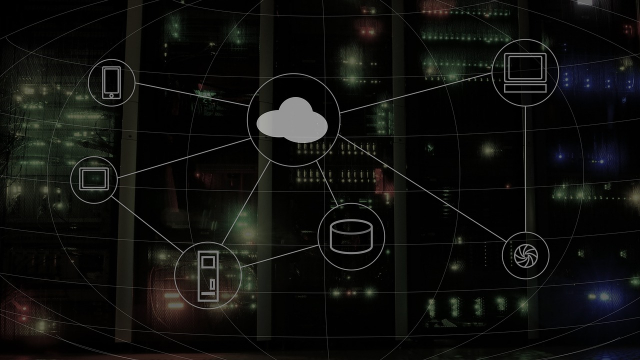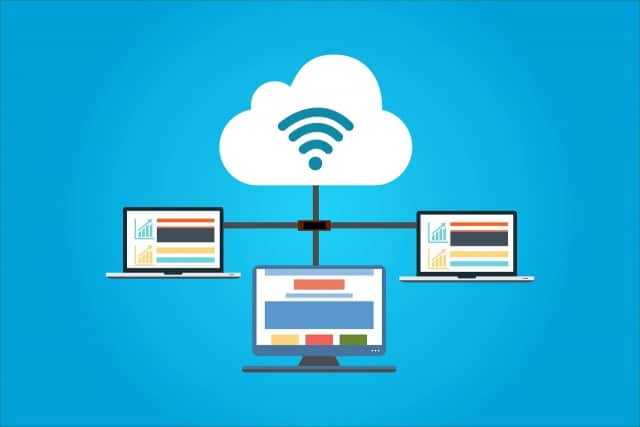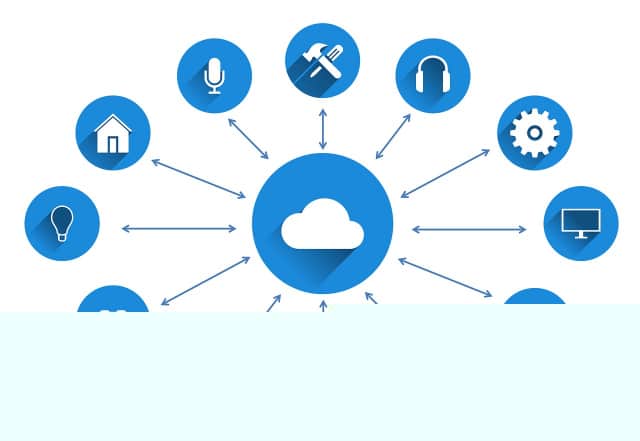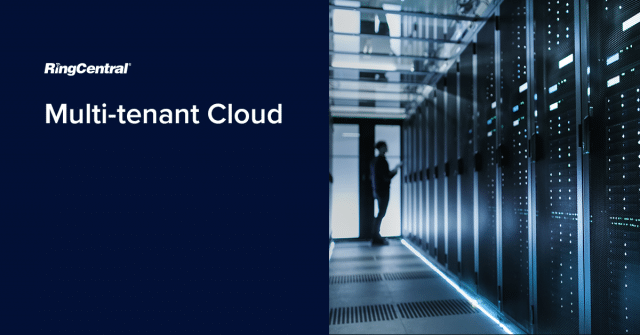There’s a lot to get to grips with when it comes to cloud computing. We’ve heard plenty in recent years about the revolutionary impact of the cloud, and it has indeed quietly changed the way businesses around the world operate. More and more firms are moving to cloud operations, and cloud migration services are in high demand. But what does all this mean, and what might it involve for your business?
You may have come across the term ‘cloud migration’ and wondered what exactly it meant. In fact, it’s fairly self-explanatory and refers to the process of moving assets (such as databases, computing resources, and applications) from physical on-premises locations to the cloud.
The advantages this offers to businesses can be quite considerable. Instead of having to maintain and run physical assets themselves in order to keep their essential functions up and running, they can instead outsource this functionality to a third-party cloud provider.

However, that is not the only aspect of cloud infrastructure you need to get your head around. You might also have seen references to multi-tenant cloud services, as opposed to single-tenant cloud solutions. Then there are other terms, like ‘public cloud’, ‘private cloud’, ‘hybrid cloud’, ‘cloud architecture’, ‘cloud-to-cloud migration’ and so on. In particular, there’s something known as a multi-tenant cloud, which allows various users to share resources.
In this guide, we’ll strip away some of the layers of opacity surrounding the multi-tenant cloud and explain it in layman’s terms, to give you a clearer view of what it all means. Hopefully, by the end, you’ll have a much better understanding.
We’ll start by providing a more in-depth definition of the multi-tenant cloud. Then, we’ll go on to explain how multi-tenant cloud computing works, before we elaborate on the difference between the single-tenant and multi-tenant environment. Finally, we’ll discuss the benefits of multi-tenant clouds and list some relevant examples. Let’s get started.
What is a Multi-Tenant Cloud?
At this point, you might be thinking “hold on a second.” We’re throwing all this jargon around – multi-tenant cloud, hybrid cloud, private cloud, public cloud – but we haven’t yet defined the cloud itself. This term has indeed been bandied around a lot, but rarely is it explained what it actually is. It’s worth taking a moment, before we move on to discuss multi-tenant cloud, to explain what the cloud is.
In short, the cloud consists of a cluster of services provided via the internet. There are three main categories. One of these is a software as a service (SaaS). SaaS architecture allows third-party providers to host applications and make them available via the internet. Another is a platform as a service (PaaS), where service parties provide cloud-based platforms to clients. The third main category is infrastructure as a service (IaaS), which delivers fundamental computer and network services via the cloud.

Thanks to the cloud, businesses and other types of enterprise no longer need to have their own on-premises server facilities or data centres. Instead, they can hire third-party IT infrastructure providers to supply appropriate cloud solutions. These firms are experienced and accomplished at handling migration projects and will work with clients to develop a suitable cloud migration strategy.
A multi-tenant cloud, as the name suggests, is a kind of cloud architecture that involves multiple users sharing resources. In a multi-tenant cloud environment, the various users who share these resources are allocated their own space, which they can use to store their own data, applications and so on. Only the appropriate users are allowed to access this space, with all other tenants restricted to their own allotted space. This helps to keep everyone’s data secure.
Cloud adoption can offer myriad benefits to businesses. Perhaps most importantly, it can help them save money by sparing them the costs of running and maintaining their own server infrastructure. It can also offer enhanced reliability and data security. The robustness of cloud security, after all, is one of the main reasons why so many firms are migrating to the cloud.
A cloud provider will be happy to answer any queries you might have on security measures, network transfer and the various migration services your business might need.
How does the multi-tenant cloud work?
There are single-tenant and multi-tenant cloud services. In the next section, we’ll discuss the differences between the two in more detail. For now, we’ll concentrate on multi-tenant (or ‘multi-cloud’) services, elaborating on what we discussed earlier.
The clue is in the name: multi-tenancy means that multiple customers use a single software instance and its associated infrastructure. Databases and other assets are therefore shared between a group of users.
With a multi-tenant architecture, multiple services are used in a single cloud environment. Each individual customer benefits from economies of scale and lowers costs. Multi-cloud services are often confused with hybrid cloud, but there is a key difference.
Multi-tenant cloud computing involves the use of multiple services (including AWS, Google Cloud Anthos, and Microsoft Azure Stack). Hybrid cloud services, on the other hand, use multiple deployment models including public and private cloud.
We’ve already noted that security is a key concern for cloud customers, especially when it comes to data transfer. Some people tend to worry that multi-tenant cloud services are less secure because they’re shared with other clients. However, this concern is unwarranted. Each client’s data is isolated, making it inaccessible and invisible to other clients, thereby keeping it safe and secure.

What is the difference; Multi-tenant vs. single-tenant cloud?
The primary difference between a multi-tenant cloud and a single-tenant cloud is that the latter only has a single client. In multi-tenant cloud environments, there are multiple customers sharing the same instance of a particular piece of software. This means that clients’ websites and applications will be hosted alongside those of other clients. Multi-tenant clouds are shared with other users.
Single-tenant cloud arrangements, by contrast, are solely devoted to the needs of a single client. This means that software architecture, databases and related elements will not be shared with others. Firms that host their own private cloud or use a third-party cloud service will most likely use a single-tenant arrangement. Nearly all public cloud arrangements are multi-tenant services.
We should also briefly discuss hybrid cloud offerings, to avoid any confusion. Hybrid cloud involves allocating resources across both single-tenant and multi-cloud services, allowing organisations to combine elements of both.
This provides these organisations with a greater degree of flexibility, according to their individual needs and budgets. Understanding the different types of cloud environment is especially important when choosing a cloud communications solution, for instance.
What are the benefits of a multi-tenant cloud?
Both multi-tenant and single-tenant cloud services have their advantages. The single tenancy offers good reliability and exceptional security, with an entire cloud environment dedicated to a single client. It’s also much easier to customise a single-tenant set-up, tailoring it to the specific needs of the client concerned. Because single-tenant clients have complete control over their cloud environment, they can mould it accordingly.

However, multi-tenant cloud services also have numerous plus points. Firstly, they’re more affordable – something which is clearly a crucial consideration for businesses. The costs associated with the software are shared and spread out across multiple clients.
Multi-tenant also allows for easier integration with other software applications via an application programming interface (API). Multi-tenant cloud environments are also generally quicker to set up than their single-tenant counterparts.
As we’ve discussed, some clients are apprehensive about the multi-tenant cloud because they fear that it’ll be less secure than a single tenancy. Of course, clients are right to prioritise security, as breaches can be very costly. Cloud providers, however, are attentive to these concerns and work continually to repair any vulnerabilities.
What are examples of multi-tenant clouds?
There are many applications that operate via multi-tenant cloud environments, serving the needs of many different customers. These include apps such as Hubspot, Salesforce, and Zendesk, as well as popular consumer-facing services including Netflix. This demonstrates that multi-tenant cloud environments are suitable for a wide range of uses.
However, choosing between the multi-tenant cloud and the single-tenant cloud requires careful consideration. You must have a clear idea of what your business needs are. You can work out from there which solution will be best suited to meeting these needs. You’ll also need to consider issues such as scalability and elasticity. Again, a cloud provider will be able to guide you through the process and help you find the right model.

How to move to a multi-tenant cloud
Migrating to a multi-tenant cloud environment is a relatively simple process. There’s plenty of specialist help on hand to guide you through it. Before you do anything, you must weigh up the pros and cons of multi-tenancy, and assess whether it might work for your business. Cost and security considerations will obviously be paramount.
Study the workload of your organisation. This will help you get a better idea of which kind of cloud platform is best for you. The more utilitarian your workload, the more benefit you’ll likely get from multi-tenant cloud solutions. Other issues which you’ll need to consider carefully will include volatility. Your IT managers will need to examine these matters carefully and determine the degree of multi-tenancy required.
Learn more about RingCentral cloud migration services!
The cloud has been integral to the digital transformation that’s taken hold across industries in recent years. Businesses around the world are already reaping the benefits of cloud migration across a range of different areas.
RingCentral offers a variety of cloud-based services that can help you cut costs and boost efficiency, while continuing to deliver an outstanding customer experience. Find out more about our cloud phone system today.
Originally published Dec 08, 2020, updated May 15, 2021


